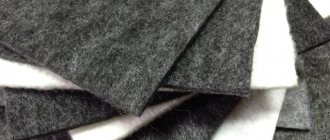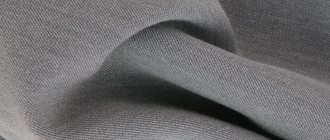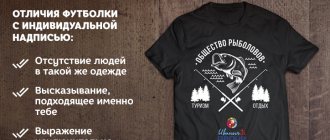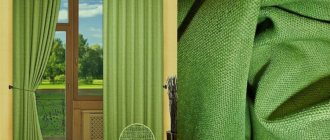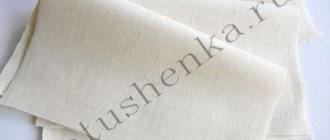Models
In the photo, beach outfits are shown by girls with slender figures. Before you start sewing the model you like, try it on in the store.
The following swimsuit models are distinguished:
- Bikini. An option for the perfect figure, as this type of beach outfit is designed to show off, not hide. This is a light bust with thin straps and small panties.
- Bando. Translated from French - “ribbon”. The bodice is made in the form of a bandage. The bottom of the swimsuit is a thong, classic swimming trunks or high panties that correct the waistline and hide the belly. This model looks good on girls with small breasts and visually enlarges them.
- Tankini. Classic swimming trunks and a T-shirt top. Not recommended for girls with an apple figure, as the shirt will ride up.
- Halter. Slightly enhanced bikini. It has ties at the neck that can support even large breasts.
- Mayo and tank. Little-known names of classic one-piece, closed swimsuits with sewn or one-piece straps, respectively.
- Monokini. A one-piece, but maximally open suit, in which the upper and lower parts are connected by small inserts of fabric.
The bodice is additionally reinforced with soft liners or frames. And the finished outfit is complemented with accessories: beads, rhinestones, decorative rings.
One-piece swimsuits:
Maillot is a classic one-piece swimsuit. It can be of different colors, draperies, decor. It is preferable to choose a round, square, V-shaped neckline according to your parameters.
A monokini is a mixture of a closed and open swimsuit. Which is a closed suit with sexy cutouts connected by decoration.
We can continue to consider models for a long time, so we will list the main ones. If it’s interesting, write to us and we’ll look into it in more detail;)
Plunge is a one-piece swimsuit with deep cutouts in the front and back. Allows you to visually correct your figure.
Swim dress, tankini , halter , etc.
Each of them has its own characteristics of fit on the figure. Choose the one that will make you feel more confident and look charming. At the same time, it will hide flaws and demonstrate only the advantages of the figure.
Fabric selection
Criterias of choice:
- elasticity;
- resistance to light, salt and chemicals;
- density, ability to hold shape;
- hygiene;
- hygroscopicity.
Also, the fabric must be hypoallergenic.
A swimsuit made of natural fabric shrinks, does not hold its shape well, fades in the sun and quickly loses its aesthetic appearance due to the action of chlorine.
Let's look at the main synthetic fabrics in the table.
| Fabric name | pros | Minuses |
| Polyester | Protects from ultraviolet radiation | Electrified |
| Has water-repellent properties | Takes a long time to dry | |
| Resistant to various types of pollution and proliferation of microorganisms | Does not allow air to pass through, “does not breathe” | |
| Retains color | Requires gentle washing without spinning | |
| Polyamide | Repels moisture | Doesn't wash well |
| Prevents the growth of bacteria | Does not tolerate heat above 40°C | |
| Doesn't fade, doesn't fade | Gentle wash without spin | |
| Durable but lightweight | ||
| Lycra (elastane, spandex) | Elastic | Synthetic fiber |
| Lightweight and durable | ||
| Rarely used in its pure form | ||
| Moisture resistant | ||
| Keeps its shape and does not wrinkle | ||
| May cause an allergic reaction | ||
| Hygienic | ||
| Permanent color | ||
| Microfiber | Allows air to pass through | May lose shape without elastane |
| Dries quickly | ||
| Pleasant to the body, hypoallergenic | ||
| Supplex, sports jersey | Durable | More expensive than other fabrics |
| Resistant to abrasion, sun and chemicals | ||
| Waterproof, dries quickly | ||
| Allows air to pass through | ||
| Elastic |
The best fabrics for sewing a swimsuit are lycra, microfiber and supplex. A beach outfit made from these materials will be durable and easy to care for.
Rules for sewing elastic bands
- The outer edges of the product are equipped with elastic bands that have water-resistant qualities that are not affected by salt and chlorine.
- An elastic band with a width of 1 cm is considered the best option.
- The elastic is combined with the raw edge of the model. Its center is stitched with a wide zigzag seam. The edge is finished with overlock.
- The edge of the fabric, equipped with an elastic band, is folded, secured with a zigzag stitch of medium width.
- The elastic band at the front of the leg slots is attached without stretching, and at the back with slight tension.
club.season.ru
Sewing technology
The process of sewing clothes consists of:
- cutting fabric;
- connection of elements;
- decorative finishing.
Manufacturers develop separate patterns for each model and size of swimsuit.
When working independently, the process is simplified as much as possible. The use of elastic fabrics makes cutting easier. Basic tricks of home cutting:
- Trace according to the example. Take the soft bra cup pads, place them on the fabric and trace around them, adding a seam allowance. Cut the bottom according to the panties.
- By eye. The bikini top is cut from two triangles. It is enough to roughly calculate the width of the mammary glands, their height and draw a suitable triangle.
- Bandeau without cut. This fashionable swimsuit requires no tailoring at all. It is enough just to cut one or two strips of fabric around the circumference of the chest and combine them into the finished product.
- According to the pattern. Find them in fashion magazines at the beginning of the season or on the Internet. To design one-piece suits, the dress pattern is used as a basis.
It is better to cut children's swimsuits by outlining the child's underwear: panties and a T-shirt.
Step-by-step instruction
The tailoring itself has its own specific features:
- The seams should be stretchy. You need to select an overlock stitch on the machine. Threads must have moisture-resistant and elastic qualities so as not to tear;
- It is necessary to attach a waterproof elastic band to the edges so that the product holds better.
To cut and sew the bottom of the swimsuit you need:
- Choose panties from your wardrobe that fit snugly on your figure, open them on the sides;
- Transfer the resulting pattern to the fabric from the wrong side, cut out and stitch the part, sew on the lining fabric;
- Sew the seam carefully from the front side;
- Sew the waistband and thread the elastic through it.
For the top you will need the following:
- Place the fabric wrong side up;
- Schematically draw a pattern for the top in the form of a rectangle with a length equal to the half-circumference of your rump and a width of 35 cm;
- Once you have cut out the piece, fold it in half and stitch. The cups need to be inserted inside the strip; you can do without them;
- The cloth must be gathered in the center and stitched. Thread the elastic through the bottom of the part so that the product fits well;
- Cut two strips from the fabric and stitch them on the sides, install the clasp.
DIY fashionable swimsuit
The easiest way is to sew a model that does not require a pattern. Let's take a bandeau as an example. For work you will need: fabric for the base and lining, paper, thread, scissors and a sewing machine.
You need to sew a swimsuit with an elastic seam, for example, a zigzag. Choose thin threads that are resistant to moisture and abrasion.
Step-by-step instruction:
- Measure bust circumference and fullness.
- Cut two rectangles from the fabric according to the given dimensions from the lining fabric (cotton jersey or microfiber), and two slightly larger ones with allowances for the side seams from the main material.
- Fold the strips face inward and stitch along the long edges.
- Cross the halves and sew along one side.
- Carefully gather and connect the ends.
- Transfer the outlines of old swimming trunks onto paper or cut them out.
- Cut out the parts of the panties, connect the base with the lining, and sew the side edges with an overlock stitch.
- If necessary, add finishing elements to the finished set.
It's not difficult to sew a swimsuit with your own hands. Choose a fabric, think through the model in detail and show your imagination. Exclusive beach outfit is ready. All that remains is to complement it with a light cotton tunic.
Elimination of defects when sewing a swimsuit.
Published 16 July 2012 | Author: admin
If the swimsuit is too long, shorten it at the shoulder seams. If the line of the neckline and armholes has risen, mark with chalk and draw a new line with chalk.
If the swimsuit has a narrow armhole, mark a new line with chalk and cut it out.
If the swimsuit is too wide in the fit, reduce the width using the side seams before adding elastic.
How to sew your own gymnastics leotard
A gymnastics leotard should look bright, stylish and comfortable. Judges always pay attention to the appearance of the athlete.
First, make a sketch of the costume, what it will ultimately be like. Manufacturing technique:
- Schematically mark on the grid the details of the future product: front, back, lower parts. Moreover, take into account the measurements taken from the person for whom you are sewing the product: hip and chest circumference, armhole, size from the middle of the groin to the waist and from the waist to the neck;
- Cover the resulting parts of the product, with a designated area for seams. Cut out the same parts from the desired fabric and connect it to the lining;
- Next, decorate the swimsuit as you wish.
Swimming trunks
It is easier to make swimming trunks than a bodice, since, as a rule, there are no additional details in the form of foam rubber, push-up or underwire. All you need is to cut out the fabric according to the ready-made patterns, sew a thin elastic band along the edges and sew around the edges, folding part of the fabric used to the wrong side.
Note! The most important thing is to make fastenings on the sides.
Swimming trunks pattern
Uncover
To make working with swimming trunks as simple as possible, you can take old swimming trunks, cut them and remove the pattern from them. If the fabric is see-through, then you need to add another additional layer of fabric in addition to the first.
Sewing
Then the sewing of the fabric itself occurs. The cut is processed with an elastic band, after which the ends of the product are formed. This can be accessories, satin ribbons or ties made from the same fabric from which the swimsuit was made.
Swimsuit from an old T-shirt
To create an exclusive swimsuit, you don’t need not only expensive fabric and accessories, but also new fabric altogether. Even more, to sew some models you don’t even need a sewing machine. For example, you can sew a swimsuit from an old T-shirt by hand. You need to act in the following sequence:
- Wash the T-shirt, iron it and lay it on the table, do not rip the seams;
- Comfortable panties are applied to a T-shirt folded in half and outlined taking into account the allowances;
- The bodice is applied to the upper half, one cup is outlined and fits into the triangle;
- Next, two blanks for panties and two for the bodice are cut out with sharp scissors;
- The tie for the top, which goes around the chest, is made from the bottom hem of the T-shirt;
- The remaining ties are made from strips of fabric woven into braids;
- All parts are sewn by hand or using a sewing machine.
Taking measurements
You need to take measurements of yourself or another girl while wearing underwear. To ensure that the swimsuit does not hang on the figure, a test piece of fabric needs to measure its length in a calm state and with strong stretching.
The results obtained must be converted into percentages and each measurement multiplied by this coefficient. To create a swimsuit pattern, you need to measure the following parameters:
- Saddle depth (distance from the top of the panties to the bottom of the groin);
- Hip girth;
- Waist circumference;
- Cup height;
- Bust width;
- Chest circumference;
- Circumference under the bust.
Necessary tools and preparatory work
Strict adherence to the sequence of work stages will help you sew a beach dress quickly and efficiently. Once the pattern has been selected, it is important to prepare all the necessary equipment for work.
To sew a beach sundress you will need:
- sewing machine (it’s good if it’s electric with an overlock function);
- tailor's scissors;
- pins, measuring tape, tailor's patterns if possible;
- various decorative elements (cords, lace, braid, buttons, zippers, elastic band).
Separately, it is worth studying the issue of material selection. Beachwear is made from natural, hygroscopic fabrics. Textured linen, light staple, and openwork lace are ideal. Never use synthetic, thick fabrics for beach dresses. It is simply impossible to wear such outfits in the heat.
The selected material must be properly prepared before work. The fabric is decated (moistened and ironed) so that the fabric shrinks as much as possible. Such manipulations will help to avoid annoying situations when an already sewn dress shrinks to size after the first wash. Then loose sections of matter are processed with a closed seam. If the fabric does not fray, then the bottom of the beach sundress can be left untreated. For a beach dress, a piece of fabric 100 cm long and 120 cm wide is sufficient.
Creating a pattern and cutting material
To create a pattern or cut fabric without a previously drawn pattern, it is important to know the parameters of the figure.
Required measurements:
- length of shoulder, front and back to waist;
- half-circumference of the waist, chest, hips and neck.
The length of the product is also indicated in advance. When developing a beach dress pattern, a small increase is included in the measurements for a looser fit. When cutting symmetrical items, use half values. The finished pattern is folded in half, thus checking the specularity of the lines.
You can avoid cutting errors if you first draw the pattern on a sheet of tracing paper or graph paper.
Uncover
When the pattern is ready and cut out, you can transfer it to the fabric. The fabric is laid out on the table, the pattern is pinned to the folded fabric with tailor's pins. The pattern needs to be outlined with a piece of soap or chalk. The fabric should be in an unstretched state because... the stretch factor is already included in the calculations. Next, the pattern can be cut out.
How to sew swimwear
If everything is quite complicated with a monokini, then the answer to the question of whether it is possible to sew up swimsuit briefs at home is much easier to find. And here there are possible options.
Swimming trunks can be sewn in different ways
There is a way to make panties smaller. This method will take a minimum amount of time and effort. It will not only make the bottoms a little more compact, but will also decorate them in the back, making the bikini much more original and modern. To complete the work you will need:
- Find the middle of the back of your swimming trunks as accurately as possible.
- Using soap or tailor's chalk, draw a line 10 to 15 cm long (depending on the original size of the swim panties).
- Gather the fabric along the marked line onto the thread. The thread should be chosen to match the color of the swimming trunks and be strong enough.
- Gather the fabric.
- Fasten the thread.
Gathering at the back is the easiest way to renovate swimwear.
Important! Using this technique, you need to go through the thread in both directions several times (and also fasten it several times). If you ignore this recommendation, there is a high probability that the thread will simply not hold up and will unravel right on the person.
The advantage of suturing in the manner described is that neither the gusset nor the side seams are touched or cut. This means that in case of weight gain, everything can be returned to normal in a matter of seconds, literally according to the principle of “one leg here, the other there.” All you need to do is remove the threads.
Another option for sewing swimsuit briefs involves cutting them on the sides and cutting off excess fabric. In this case, it is important to do everything carefully and do not forget to carefully process the seams when re-stitching.
You can also use a more interesting life hack, which is also perfect for implementing at home. The work ahead is not the most difficult:
- rip the panties apart at the side seams;
- bend it in such a way that a kind of drawstring is formed;
- insert strings into the drawstrings;
- tie the ropes.
If the bodice is on strings, it will look great. And the alteration itself is so simple and uncomplicated that even a small child can easily handle it.
You can not only buy ready-made swim panties with ruffles, but you can also make them yourself
For those who don’t like dangling strings on their swimming trunks, you can form small neat bows, hem them and secure them with belt loops or buckles.
You might be interested in: Patterns and sewing procedures for sundresses in boho style
Important! When sewing panties in a fly, if necessary, an important condition must be observed: suturing should be done as carefully as possible. Otherwise, it will be uncomfortable to walk. It is especially important to sew the gusset tightly.
